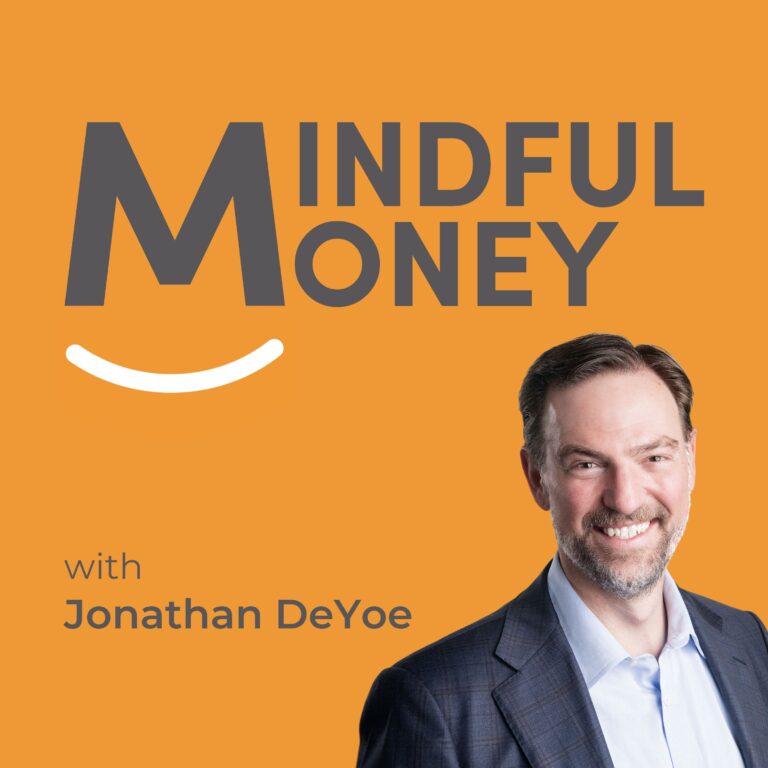This blog is the seventh of a 10-part series which covers everything you need to know to get started on your path to financial freedom:
1. The First Step in Any Financial Plan is NOT What You Think. We Start by Knowing What is Worth Seeking.
2. Developing Your Vision of a Perfect Life
3. Adopt a Savings Habit
4. Emergency Fund Basics
5. Eliminate High-Interest Debt
6. Saving and Investing for Retirement
7. Paying Down Low-Interest Debt and Building Taxable Savings
8. Simple, Basic, Mindful Investing
9. The Final Step – Portfolio Optimizers
10. The 10 Core Beliefs of Mindful Investors
About 40,000 people visit Mt. Everest’s southern base camp every year. Only 800 make the summit.
Getting to base camp, at 17,600 feet, is a long and difficult trek, and the views are better than almost any other place in the world. But they are not the summit.
Our brief step-by-step guide to personal finance that started in early January has brought us comfortably to the financial equivalent of base camp. We have:
- Discovered what is worth seeking,
- Developed our own vision of a life well-lived,
- Embraced the savings habit,
- Built an emergency fund,
- Eliminated bad (high-interest) debt, and
- Are saving and investing for retirement.
For many people, even these 6 small steps will feel like a stretch. About 36% of Americans earn less than $50,000 annually. If you are in this category, steps 3-6 can feel impossible – making steps 1 & 2 a painful reminder of things you can’t imagine. Be patient with yourself. Remember to keep moving forward. Keep working hard. Develop new skills and work on ways to increase your income. You are in the process of becoming. You will get there.
According to the US Census Bureau, the median US income in 2021 was $69,717 and only 34% earn over $100,000. For the vast majority of Americans, the simple lessons in these 6 steps will be enough. Once they have completed 1-6 above, they will be on the path to the fulfillment of the vision they created for their lives in step 2. Now it is a simple issue of giving their efforts enough time to bare the fruits they are seeking.
This can be good enough, and for most of us… it is all we will ever need.
For the rest, there are a few more steps to take to accelerate our successes and fulfill our life plans. Some of us will attempt the summit. Anyone who gets to base camp is hugely accomplished already and they are enjoying some amazing views. Some of us will also want to push towards the bigger goals. We want to accelerate our efforts. We want to do more.
For us, there are three additional steps on the way to the summit:
- Becoming debt-free and adding taxable savings,
- Keeping investing simple, and finally
- Optimizing our portfolios.
Today, we want to cover two steps in particular: paying down low-interest debt, and saving in a taxable non-retirement account.
Becoming Debt-Free by Eliminating Low-Interest Debt
Everyone talks about being debt-free. And I agree that it is an admirable goal, but only after you have started building assets for the longest of long-term goals: Retirement. Once you’ve paid off the high-interest debt (all BNPL balances are gone, credit cards are paid off monthly, no personal loans outstanding) AND retirement savings are on track, then you begin shedding your low-interest debt – those debts with low to medium, single-digit interest rates often collateralized by large purchases.
But, frankly, you may want to wait. At this stage, it is MORE about building net worth than it is about debt reduction. There are two remaining ways to build net worth. You can pay down low-interest debt, or you can begin to save into a taxable investment account.
There is one assumption (We are always pushing to increase income), and one question (What do I do with my excess income Now? How about Now? … Now)? As you grow your income, you move from step-to-step along the order of financial operations. The order is:
- 1-Month Emergency Fund
- High-Interest Debt
- Completely-funded Emergency Fund
- Retirement Savings
- Low Interest Debt – OR – Taxable Savings (a personal preference)
If you are not fully funding your retirement savings programs, then you should focus on maximizing those savings BEFORE turning your attention to low-interest debts.
When you are fully funding your retirement, you have additional excess, and want to focus on becoming debt-free, then start with any low-interest “consumer” debt first – things like furniture, electronics, appliances, and cars – any items with depreciating values. Start with the highest-interest consumer debts and work your way down to the lowest ones. After eliminating consumer debt, move on to your big debts, such as your student loans and mortgage.
In most cases it’s better to leave your house for last, and depending on the rate, you may never want to pay it off. I refinanced my mortgage into a sub-2% loan in 2020 and I plan on making the minimum payment for as long as possible. That’s because real estate typically increases in value AND your mortgage will typically be the lowest rate loan available (since the collateral is so strong). A gradual increase in your home’s value can offset much, if not all, of the interest rate you pay on your mortgage. Plus, don’t forget the potential tax breaks from home-related debt.
Debt costs you money, so you’re generally better off without it. But, NOT investing also costs you money in the form of compound interest. You want to make sure you’re getting most bang for your buck. It often comes down to personal preference, but it might be optimal to keep some low-interest debt while putting the rest of your excess cash flow to work in a taxable investment account.
If you have a choice of paying off a 4% loan or investing in a taxable portfolio with a likely long-term return of 7%, the math suggests you would be better off adding to the portfolio.
Building Taxable Investments
Investing in a taxable non-retirement account to further build your assets can be just as important and useful as becoming 100% debt-free. Certainly, before doing this, make the maximum contributions to your employer-sponsored retirement plans (401(k) or 403(b)) and/or your Individual Retirement Accounts (IRAs). If you’re already maxing these tax-sheltered retirement accounts and you have additional savings, then a taxable non-retirement (brokerage) account is worth considering.
Asset building is arguably the best route into financial freedom. Once you establish a pool of compounding assets, you’ve immediately increased your chances of getting financially ahead in life. Over time, the magic of compounding grows your asset base at ever-increasing rates. Adding more as soon as possible will accelerate the compounding process. This additional savings can either bring your moment of financial independence ever closer, or it can bring some of your other stretch financial goals – travel, sabbatical, or starting your own business – into view.
Don’t completely ignore debt, but when you do the math, dollar-cost averaging into a taxable account often comes out ahead. Even if you can only add fifty or one hundred dollars a month into a taxable account, it’s worth it, and adds to long-term compounding.
Don’t forget about taxes. Because your taxable accounts are not protected from taxes like your retirement accounts (401(k)s, 403(b)s, and IRAs), they are subject to tax consequences with every transaction. You are subject to capital gains taxes when you sell a security for more than you originally paid (the cost basis), and income taxes when you receive a dividend or interest income. So, you want to maintain your taxable investing with a low transaction process.
Of course, all investing involves risk, including the possible loss of principal. So, you need to be mindful of how you invest. Next week we’ll talk about how to keep your investments simple and on-task.
Another benefit of having a taxable investment portfolio is the control you have over the source of your spending when you start drawing from your accounts. When you have a taxable account along with your traditional IRA and your Roth IRA – all of which are taxed differently – you can choose where to get the bulk of your spending when you retire. This choice gives you wiggle room around taxes.
When you take money out of a taxable investment account, any trades to free up cash are taxed at capital gains rate. Since the capital gains rate is lower than your ordinary income tax rate, you can, in effect, choose your tax rates. By keeping your withdrawals from IRAs and other retirement portfolios to a minimum, you keep your income to a minimum and your taxes to a minimum. This proves to be an enormous benefit over 30 years of retirement.
Depending on circumstances, we often recommend withdrawing no more than the required minimum distribution (RMD) from your non-taxable accounts. This is one area of your financial lives where a professional can prove invaluable.
Once your onto paying down your low-interest debts and saving in a taxable account, you’ll be a little closer to meeting all your big life goals – not just your retirement targets.
In the end, the true benefit of financial planning is not financial –
it’s a life well-lived.






